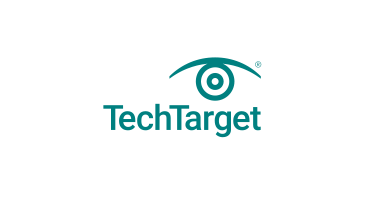Overview of Apple Inc.
What is Apple?
Apple Inc. (formerly known as Apple Computer Inc.) is a prominent American technology company renowned for its innovative products, including the iPhone, iPad, and Macintosh computers. As one of the world’s largest corporations, Apple boasts a market capitalization exceeding $3 trillion.
Apple devices are celebrated for their distinctive design and meticulous attention to detail. The seamless integration of hardware and software results in superior performance compared to similar products from competitors. Apple has established itself as a market leader by strategically positioning its offerings. While it didn’t pioneer personal computers, graphical user interfaces (GUIs), mp3 players, smartphones, smartwatches, or tablets, it was among the first to enhance these technologies, making them user-friendly and well-designed. This approach led to widespread market acceptance.
Product Range
Apple’s Product Lines
Apple provides a diverse array of products and services, including:
-
Mac Computers: The Macintosh, or Mac, is Apple’s line of personal computers, featuring models like the iMac (all-in-one desktop), Mac mini (standard desktop), Mac Studio (media-focused desktop), Mac Pro (professional workstation), MacBook Air (consumer laptop), and MacBook Pro (professional laptop). All Macs operate on macOS, and since 2020, they utilize Apple’s in-house “M” series CPUs designed on ARM architecture, praised for their performance and efficiency. Macs are favored by students and creative professionals for their stylish design and user-friendly interface, while programmers appreciate their Unix-based, POSIX-compatible operating system.
-
iPhone and iPad: The iPhone is Apple’s flagship smartphone, while the iPad serves as its tablet offering. The iPhone achieved widespread popularity due to its intuitive design, built-in app store, and capacitive multitouch screen. It employs the “A” series mobile CPU, while recent iPads feature the same “M” series CPUs found in Mac computers. Both devices run on operating systems—iOS and iPadOS—derived from the Unix kernel of macOS, but tailored for touch interfaces.
-
Apple Watch: The Apple Watch is a multifunctional smartwatch and fitness tracker capable of monitoring health metrics such as ECG, blood oxygen levels, and heart rate. It can function as a digital key for compatible vehicles and operates on the watchOS platform.
-
Apple AirPods: These wireless headphones connect via Bluetooth, allowing users to listen to audio from their devices, take phone calls, and access Siri. The AirPods Pro 2 can function as a hearing aid for those with milder hearing loss, contingent upon a hearing test.
-
Apple TV: Apple TV acts as a streaming media device and set-top box, equipped with voice control and the ability to integrate with other Apple devices through AirPlay. It features video conferencing capabilities and includes the find-my-remote function powered by tvOS.
-
Apple AirTag: This small tracking device can be attached to items for location tracking through the Find My app, utilizing Bluetooth and the Find My network for communication.
-
Vision Pro: Announced at the 2023 WWDC, the mixed reality headset is capable of both augmented and virtual reality experiences. Launching in 2024, it operates on visionOS and features spatial computing, allowing users to interact via gestures, eye movements, and voice commands. It supports popular applications and offers advanced security features.
-
Services: Apple also provides an array of services including iCloud (file storage and synchronization), Apple Pay (payment system), and Apple TV+ (streaming service). Additional offerings include Apple Music, Apple Books, and iMessage, alongside Siri, its intelligent virtual assistant.
- Apple Intelligence: Apple’s AI platform includes generative capabilities across its ecosystem, integrating ChatGPT within Siri for enhanced responses. This can assist with scheduling, writing, summarizing, image creation, and photo enhancement. Apple Intelligence is slated for integration in iOS 18 and is compatible with newer Apple devices.
History of Apple Inc.
Apple Computer was established in 1976 by Steve Jobs, Steve Wozniak, and initially Ronald Wayne, who soon sold his shares. Their first product, the Apple I microcomputer, was crafted in Jobs’ garage and sold without essential components like a keyboard and monitor. The commercial success of the Apple II in 1977 propelled Apple to the forefront of the American computer market, leading to a significant IPO.
Inspired by Xerox’s GUI technology, Jobs pushed for a GUI in the Apple Lisa, which ultimately suffered from delays and was released at a high price, resulting in poor sales. The 1984 launch of the Macintosh, despite its groundbreaking advertisement during the Super Bowl, faced disappointing sales due to its cost and performance issues.
A power struggle at Apple culminated in Jobs’ exit, leading him to found NeXT. Meanwhile, Apple found success through continued sales of the Apple II and upgraded Macintosh models, which enjoyed popular software availability in the creative sector. However, intense competition and internal challenges in the mid-1990s nearly led to bankruptcy.
After acquiring NeXT in 1997 and bringing Jobs back as interim CEO, Apple refocused on core computer products. The launch of the iMac in 1998, designed by Jonathan Ive, marked revitalization through its distinctive look and functionality, alongside software enhancements for digital media.
In 2001, macOS was launched, based on NeXT’s operating system, and the iPod followed soon after, establishing Apple’s status as a consumer electronics leader. The introduction of the iPhone in 2007 revolutionized the smartphone market, and the App Store, launched the following year, transformed how developers and users engaged with applications.
In 2011, Jobs stepped down due to health issues, naming Tim Cook his successor. Jobs passed away later that year, but Apple has since continued to innovate and expand its product line, including its proprietary CPUs and services, while rumors suggest future ventures into virtual reality and autonomous vehicles.
Explore how Apple’s products and services can enhance business efficiency, including managing Mac computers in Windows environments or leveraging Apple TV for workplace applications.








